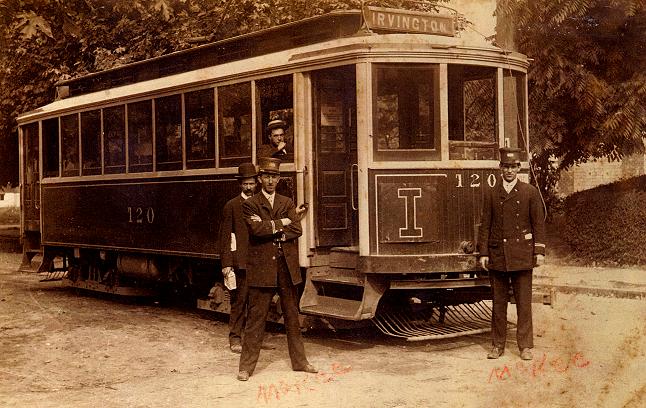|
In the early days, most people in Portland lived within a mile or two of the city and walked everywhere. Then, in 1872, Ben Holladay built the city’s first horse-drawn streetcar line, which ran along First Street. According to historian Mark Moore, “the early horse-drawn streetcars were soon joined by and later replaced by steam trains and eventually electric trolleys. Portland’s first electric streetcar took to the rails in 1889 and carried passengers across the Steel Bridge to the town of Albina.”
Moore explains that the expanding streetcar lines allowed residents to live farther from the center of the town. “Real estate developers created the communities of Council Crest, Hawthorne, Irvington and Mount Tabor, as well as others, as the streetcar lines lured people away from the central city to live in the suburbs.” The Irvington streetcar line originally came across the Steel Bridge, went north on Grand, east on Multnomah, north on 15th, then ran east on Tillamook. In 1910, the east turn at Tillamook was abandoned and instead the car continued north to Siskiyou. In 1913, the line was extended further north to Prescott. Historian Richard Thompson notes that,“by the time ridership peaked in 1922, street railways had become more than a means of transportation. During hot summer evenings, families relaxed in open cars; and on Sundays, people rode to the end of the line for a day of picnicking, hiking, or fishing. Trolley parks such as Council Crest and Oaks Park offered attractions including amusement rides, dance bands, and roller skating. People also rode streetcars to racetracks, golf courses, and beaches.” Thompson explains: “Affordable automobiles, better roads, and the rising cost of labor eventually changed all of that. By the late 1920s, people were increasingly envious of the freedom and status that came with owning an automobile... The last three city streetcar lines were converted to bus operation in 1950 and the final interurban line ceased operating in 1958.” The Irvington line was converted to bus in 1940. Sources: Mark Moore – pdxhistory.com Richard Thompson –oregonencyclopedia.org Portland Vintage Trolleys – vintagetrolleys.com Carl Townsend – irvingtonpdx.com
0 Comments
Your comment will be posted after it is approved.
Leave a Reply. |
Categories
All
Archives
September 2023
|

 RSS Feed
RSS Feed
